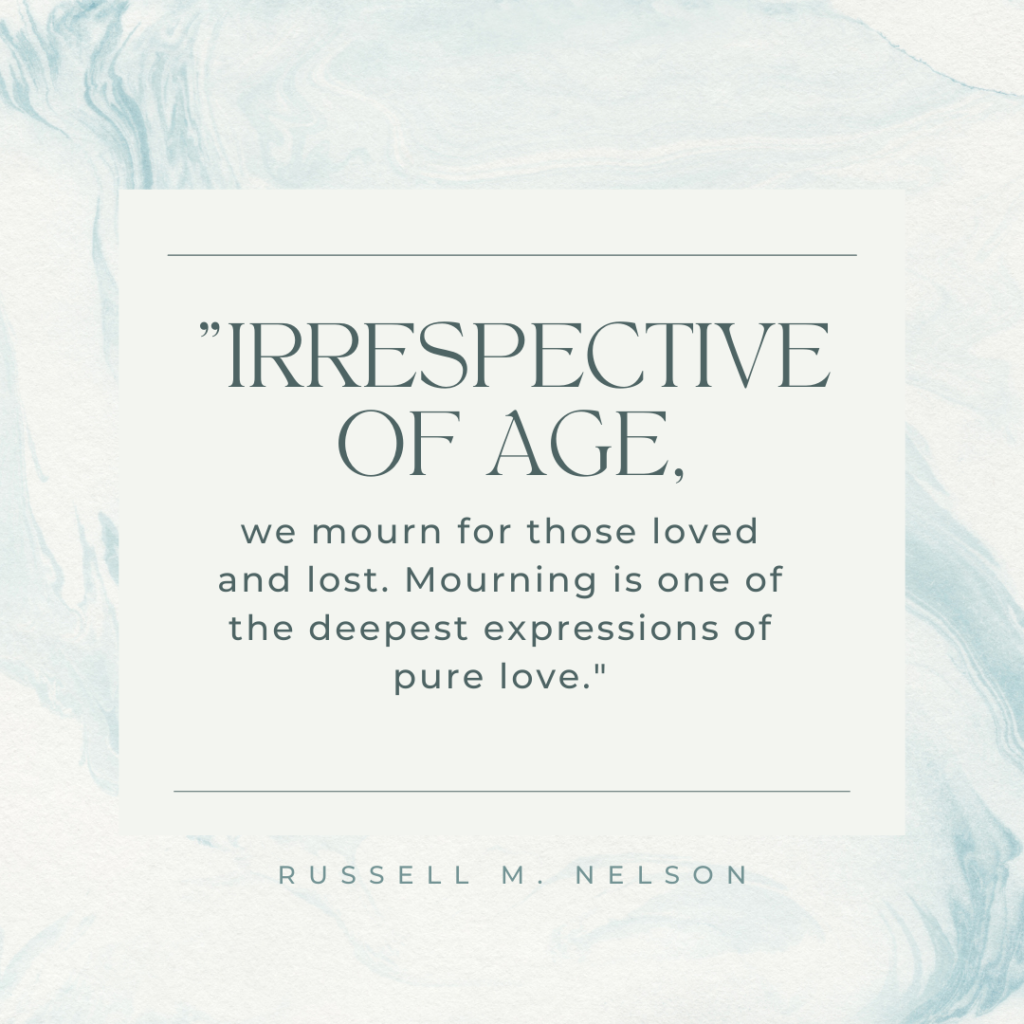By Wendy Boggs, MS-G, Counseling Intern
To play on a common turn of phrase, when you’ve seen one older adult, you’ve seen ONE older adult. This is important to remember when considering America’s elders, as the older adult population is also the most heterogeneous. So, what’s this mean? It means we have to work to remember older people are not all the same, with the same needs, desires, or reactions to life events. Just as grieving is not a uniform, one-size-fits all process, neither is aging.
Although older and younger individuals are diverse populations, they demonstrate similar grief responses, with intensity and duration moderated by various internal and external factors. These factors include the individual’s relationship with and level of attachment to the deceased, circumstances surrounding the death, previous history of loss, personal coping style, social variables, and the number of additional losses and stressors experienced during the mourning period (Worden, 2018). An interplay between these factors (and more) results in a grief process that is as unique as the person experiencing it.
In general, regardless of age, grief responses can include:
- Affective responses such as depression, anxiety, guilt, anger, loneliness, and shock
- Cognitive responses such as preoccupation with thoughts of the deceased, a sense of hopelessness, and memory problems
- Behavioral responses such as restlessness, agitation, fatigue, weeping, and withdrawal
- Physiological responses such as loss of appetite, sleep disturbances, exhaustion, and decreased immunity (Hansson & Stroebe, 2007)
Although older and younger adults have similar grief responses, there are some considerations to keep in mind when helping an older adult who is experiencing loss.

Primary And Secondary Losses Accumulate With Age
As individuals age, losses can accumulate. For instance, advancing age increases the likelihood of experiencing death-related, or primary, losses, such as the death of friends, family members, or one’s spouse. However, there are also less noticeable, or secondary, losses that can also increase as one ages. These might include:
- Loss of work, through retirement, or loss of other roles (e.g., friend, spouse, parent)
- Loss of health
- Loss of independence, as one decides to limit or give up driving,
- Loss of companionship when one’s social circle becomes diminished due to death, relocation, or other factors
- Loss of home and community, due to relocation
- Loss of financial stability that may come after the death of a spouse
When helping individuals in grief, it is important to consider what secondary loss(es) the individual may be experiencing and, when they are ready, support them in locating supportive resources, as well as in mourning each individual loss in their own way.
Grief Can Impact Physical Health
The death of a loved one is one of the most, if not the most, stressful life events humans face. It triggers our body to produce cortisol, the “stress hormone.” Biologically, increased cortisol affects the body in a number of ways, not least of which is lowering immune function. As the immune systems of older adults decline as a normal part of aging, they typically enter into a period of bereavement with lower immune functioning than their younger counterparts.
As a result, the immune systems of older adults are especially taxed during a period of grief and mourning. Older adults should be encouraged to continue taking all prescribed medications and even touch base with their primary care physician in order to ensure any illness that may develop is caught and treated early.
Loneliness Can Be Deadly
As a result of shrinking social circles due to death and other losses, older adults are at an increased risk of social isolation and loneliness, which is defined by the Centers for Disease Control, as “…the feeling of being alone, regardless of the amount of social contact.”
And, loneliness can be deadly, as it has been associated with an increased risk of a number of health conditions, including depression, stroke, heart disease, and suicide (CDC, 2021). In fact, research has shown social isolation and loneliness to be as detrimental to health as smoking 15 cigarettes a day (Holt-Lunstad, et al., 2015).
Notice that it is not always the amount of social contact that is important, but the quality of that contact — someone can feel isolated, or lonely, even when surrounded by people. When supporting older adults who are bereaved, actively hold space for meaningful conversations and encourage them to reminisce and “tell their story.”
Social isolation and loneliness increased significantly during the COVID-19 pandemic, as we have been advised to “physically distance” in order to help prevent the spread of the virus. Although it’s important to physically distance in order to promote health and well-being, it’s also important to stay connected.
Reach out virtually (e.g., Skype, Facetime), make a phone call, visit with someone outside (wearing a mask if appropriate), write letters, or enroll in online learning. Just be sure to care for yourself one small way each day.
Overall, when someone is bereaved, the best gift you can give is often your ongoing, supportive presence as they journey on their unique path of grief and mourning. Hold space for them. Let them know you care, whether virtually, or in a socially distanced manner.
References
Centers for Disease Control and Prevention (2021). Loneliness and social isolation linked to serious health conditions
Hasson, R. O., & Stroebe, M.S. (2007). Bereavement in late life: Coping adaptation, and developmental influences. American Psychological Association.
Holt-Lunstad, J., Smith, T. B., Baker, M., Harris, T., & Stephenson, D. (2015). Loneliness and social isolation as risk factors for mortality: A meta-analytic review. Perspectives on Psychological Science, 10(2), 227-237.
Worden, J. W. (2018). Grief counseling and grief therapy: A handbook for the mental health practitioner. Springer.

